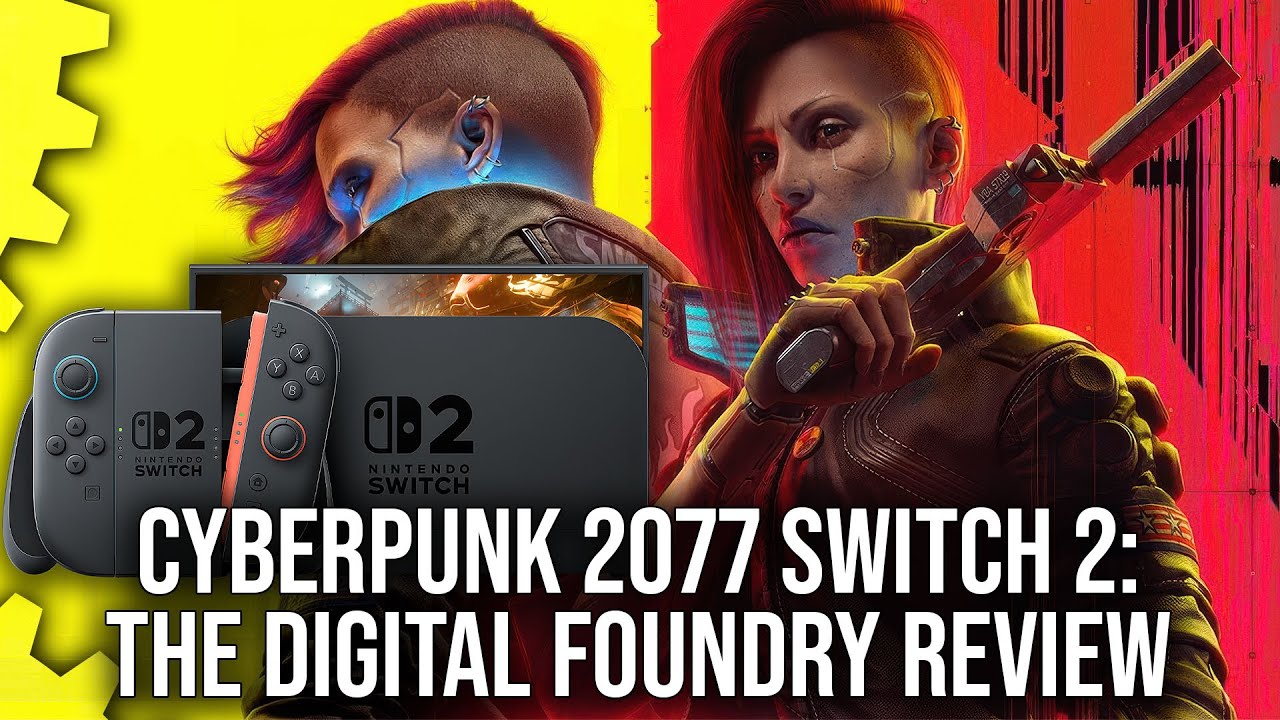Cyberpunk 2077 on the Nintendo Switch 2 is a technically impressive port that runs smoothly in quality mode with sharp visuals thanks to Nvidia’s DLSS upscaling, offering performance comparable to last and current-gen consoles. However, the demanding Phantom Liberty expansion struggles with frame rate drops and instability, making the core game more reliable, especially in portable mode where VRR support enhances gameplay.
Cyberpunk 2077 on the Nintendo Switch 2 is a technically impressive and ambitious port by CD Projekt Red, showcasing the new console’s capabilities. The game, including the demanding Phantom Liberty expansion, has been optimized specifically for Switch 2’s ARM-based architecture with unique enhancements, most notably the use of Nvidia’s DLSS upscaler instead of AMD’s FSR2 or the temporal AA used on other consoles. This allows the game to run in four main configurations: 30 FPS quality mode and 40 FPS performance mode, both available in docked and portable play, with resolutions scaling dynamically to maintain performance.
Visually, Switch 2 holds its own against last-gen and current-gen consoles, often surpassing the PS4 and even the Xbox Series S in texture quality due to its 9 GB of usable RAM. The DLSS upscaling provides sharper images and cleaner details like rain and reflections compared to PS4’s TAA method, and even manages to reduce artifacts common on other platforms. However, some compromises exist, such as lower NPC and vehicle density similar to PS4 levels, and less refined outdoor shadows that appear pixelated and less stable compared to Series S and PS5.
Performance-wise, the core Cyberpunk game runs smoothly at a locked 30 FPS in quality mode on Switch 2, outperforming the PS4 which often dips below 30 FPS in demanding scenarios. However, the Phantom Liberty expansion proves more challenging, with frequent frame rate drops into the mid-20s and noticeable frame time hitches, especially in the new Dogtown area. The 40 FPS performance mode, while theoretically offering smoother gameplay, struggles with stability and frequent dips below 30 FPS, and lacks VRR support in docked mode, making the quality mode the more reliable choice for consistent play.
Portable play on Switch 2 is a standout feature, with frame rates generally comparable to docked mode thanks to aggressive resolution scaling and the use of the console’s 120 Hz LCD with VRR support. This makes the performance mode particularly appealing on the handheld, as VRR helps smooth out frame drops that would otherwise be more noticeable. Despite some rough spots in demanding areas and the Phantom Liberty expansion, Cyberpunk 2077 remains a very playable experience on Switch 2, offering a unique blend of last and current-gen visual settings tailored to the hardware.
Overall, Cyberpunk 2077 on Switch 2 is a remarkable technical achievement and a promising start for open-world games on Nintendo’s new platform. While the ambitious inclusion of Phantom Liberty reveals some limitations, the core game performs well and benefits from unique features like Joy-Con mouse support and USB keyboard compatibility. As a launch title, it sets a high bar and suggests that future titles will continue to improve in optimization and performance on the system.
